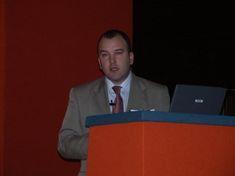
A new disease threat to the UK tomato industry has been discovered in the south east of England this year. Potato spindle tuber viroid (PSTVd), a quarantine pathogen of tomato and potato, was identified in July for the first time in a commercial tomato crop in this country.
Rick Mumford of Central Science Laboratory (CSL) took on the unfortunate mantle of bearer of bad news at the Tomato Conference 2003. He said that contingency planning for potential outbreak has proved extremely useful in work since July.
PSTVd was first discovered in potatoes in the US as long ago as 1915, but was not identified as the first viroid disease until 1971. Also known as bunchy top, it can cause yield loss of up to 60 per cent in affected plants and reduce seed germination rates by 25 per cent, said Mumford.
“There is no resistance in potatoes or tomatoes,” he said, “although there are different effects on different varieties. High temperatures and high light levels bring on more symptoms, but there is a latent period of 3-5 weeks before they appear.”
The disease is hard to miss, but harder to trace. There are two realistic origins of the outbreak in the UK, a member of staff or imported seed. There is a possible link to an outbreak in New Zealand, but no-one is looking to apportion blame, Mumford added.
One piece of good news is that the viroid may not be as infectious as was initially thought. It has spread to just 60 plants in the un-named 69,000 plant glasshouse in which it was discovered. A CSL/Adas project funded by the Horticultural Development Council (HDC) and Defra is trying to control spread and find possible prevention methods.